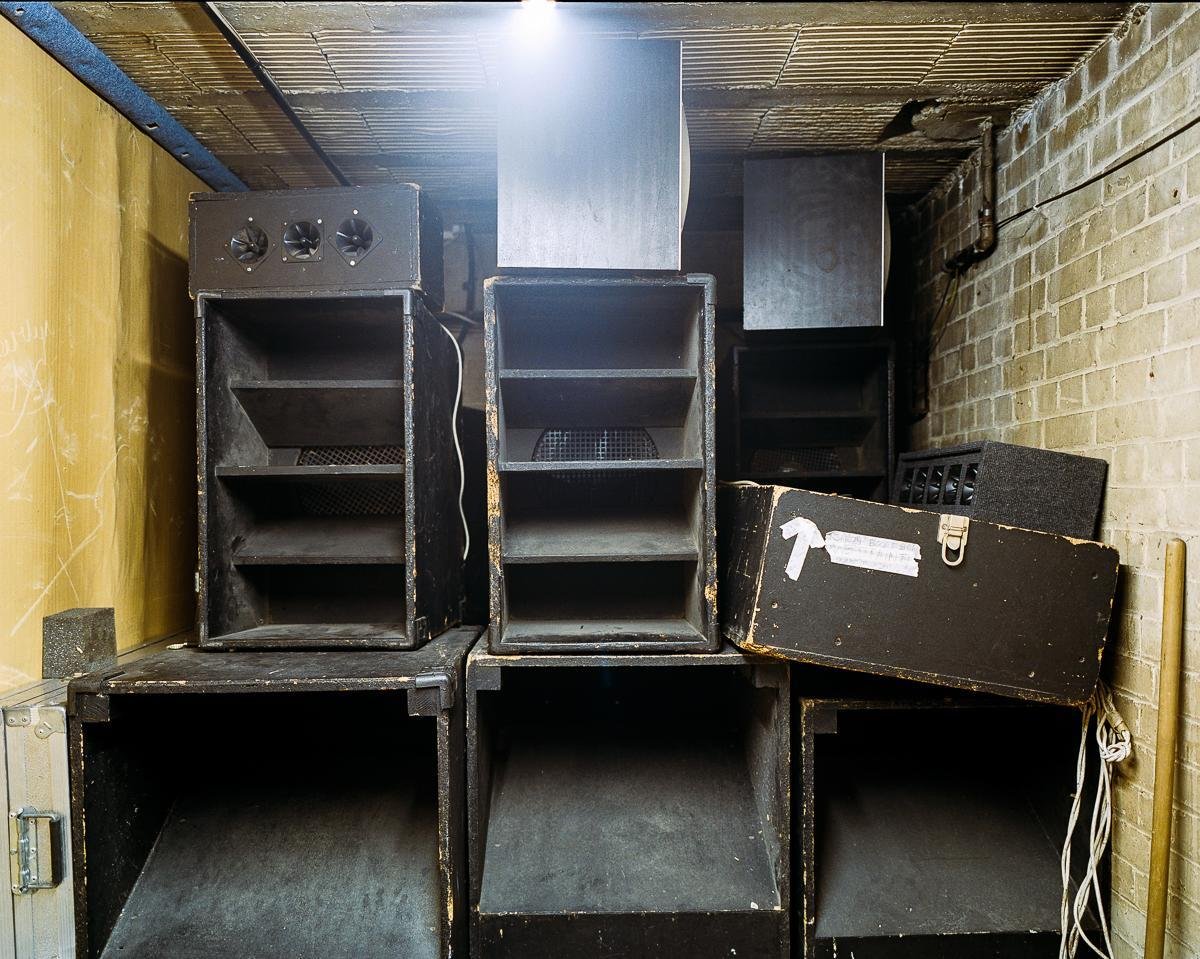Down in the Dumps: Inside Japanese Collector Culture
“If you go down to the dump today, you’re sure of a big surprise...” We know everyone’s taken a hobby too far but the Japanese propensity for mass collecting items is a quirk amongst all nations. We set out to track down hoarders of musical possessions to shed some light on why the Japanese are driven to the ends of their bank balance and beyond to fill their homes with just one item of obsession.
Our journey revealed a medley of minds fascinated with minutia. Many just felt safe whilst jostled amongst their hoard or in some cases even referred to them as their family. Many of these accumulators felt closer to a bygone age or perhaps nearer to their youth. Some felt they understood the world better or were less anxious after they left their jobs to focus on saving every item from a fate worse than the landfill: total obscurity.
Jumpei Kamiya
Collection: Percussive Items
Overall Size of Collection: 90 items
Location: Yokohama
Oldest item: “It’s a snare from 1920.”
Rarest item: “I got endorsed by an American drum company called C&C. They made a snare just for me.”

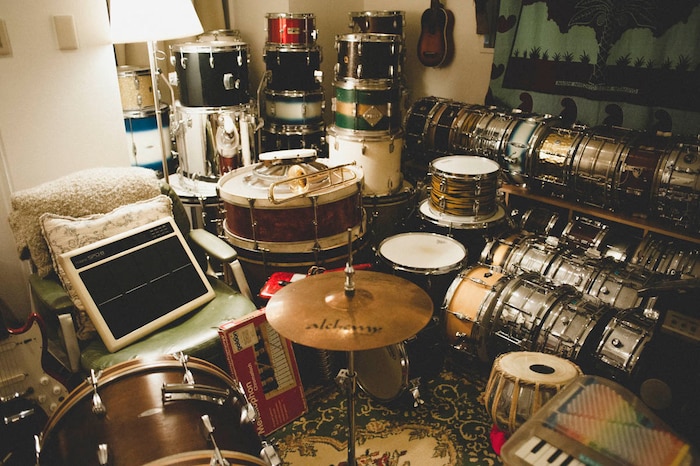

I have never thought of myself as a collector. I’m a drummer and I just ended up having some drums and things that I use for music. I have 10 drum sets, 30 snares, 40 to 50 cymbals and other little things for percussion in two suitcases. I have so many that I have one room in my house for all these things now.
Maybe we want to be an owner of things. For me, I feel very safe to be surrounded by my instruments. I can get something from them like energy or stimulation. So I want to be close to them. They are like my family.
Recently I bought some unusual items. One is from 1940 and more of a marching snare. The normal snare size is 14x7 or something like that, but this one is 15x12. It’s really big. Then I bought a set with yellow and black because I also like tigers, but it was hard to find the full set. Half a year ago I found the full set on eBay. As a beginner vintage drum set it was quite expensive, but I couldn’t help bidding more money so I got that. It cost about ¥200,000. Now I’ve probably spent well over ¥6,000,000.
If I had to save one from a fire? I’ve already thought about this. It would be the Ludwig LM411 Super Sensitive snare. I got this from my dad. My dad used to be a professional drummer. This one has a presence in its sound. And I did my first good recording with this snare, so I feel thankful to have this one.
Kazuya Matsumoto
Collection: Hamon Instruments
Overall Size of Collection: Over 100
Location: Tokyo
Hardest Item: “I guess that would be my first hamon. I didn’t know where I could get one or how much they cost.”
Rarest Item: “There is an iron artist called Kenichi Kanazawa, and he makes an instrument called ‘Oto no Katera’ (Pieces of Sounds) but not very many people actually own it.”
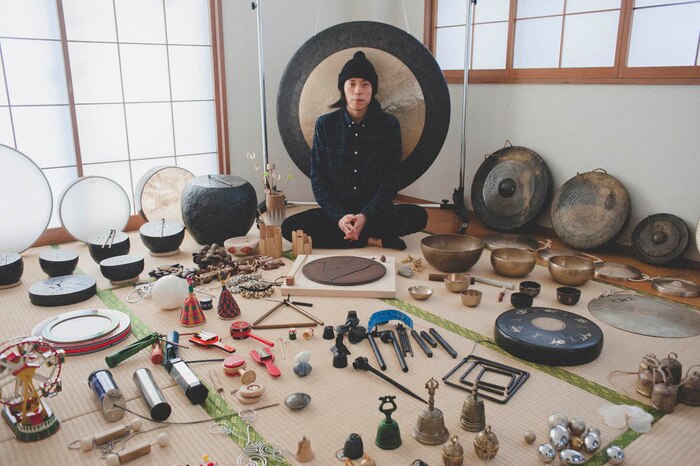
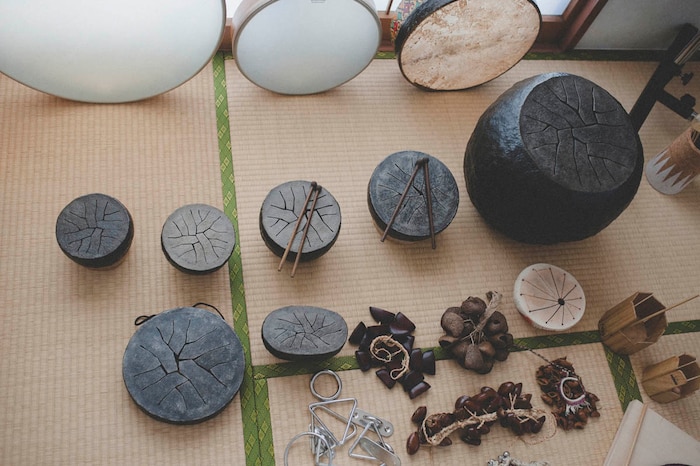
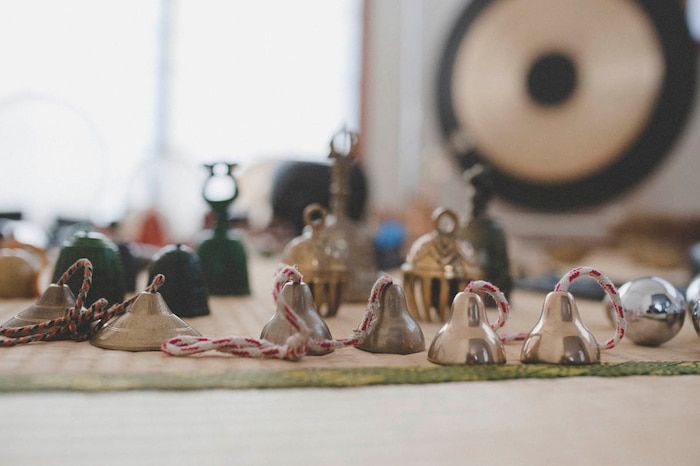
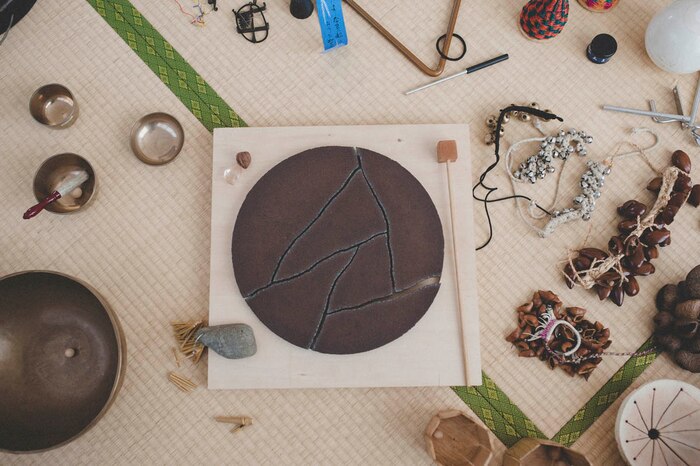
I collect percussive instruments without a perfect scale, especially Hamon (ripple sound), which is a Japanese instrument made of iron.
As a child I used to make my own instruments using wood board and some iron often used in a factory. There is a Japanese animation called Akira, and in its opening they use a song by the collective Geinoh Yamashirogumi that uses a gamelan. I was really drawn to this sound. Then, in 2005, I got my first Hamon.
Since then I’ve become friends with a guy who makes Hamon. And when I see myself now I realize they surround me. I’ve never counted them, but I think I have more than 100. I’ve probably spent about ¥2,000,000 to ¥3,000,000. But if I count drums I have no idea how much money I’ve spent!
These kind of instruments, without a perfect music scale, mean you never know what you will hear until you hit it. As I keep playing them I feel as if they are leading me. Then I have different kinds of sticks to play with. They all sound different. For example, this stick with a hexagon wood I made by myself. So they never bore me. This fact leads me to collect these instruments I think.
This may be a strange example, but it’s like a girlfriend I always feel fresh to be with. A girlfriend whom I always adore and I will never get bored with until I die.
Junichi Matsuzaki
Collection: Radio Cassette Tape Recorders
Overall Size of Collection: 3000
Location: Tokyo
Favourite Item: “My first love was made by Sony and cost 42,800 yen. I was looking at the advertisement so many times, but couldn’t buy it at that time. Now I have about 50 of them. This is the recorder I feel the strongest for.”
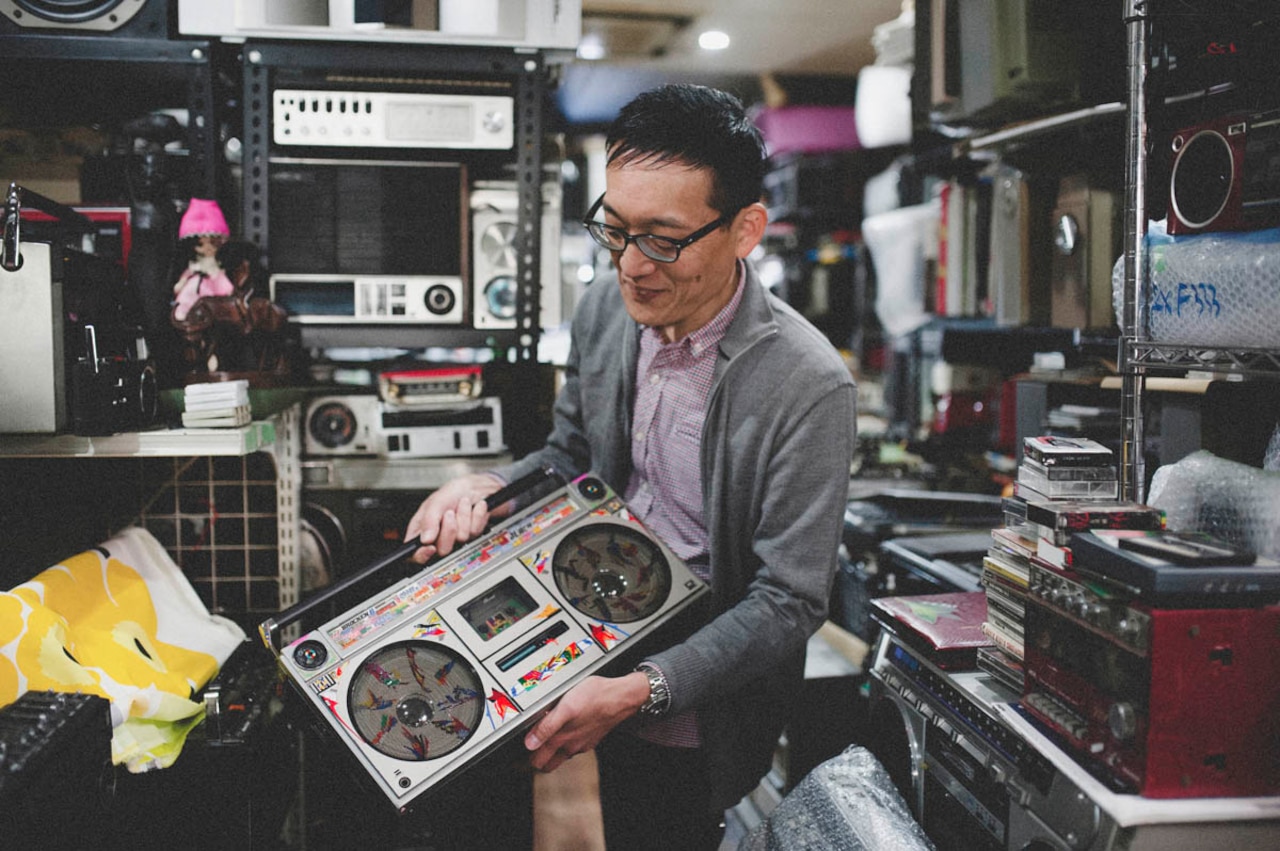
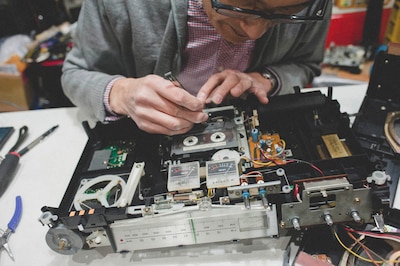
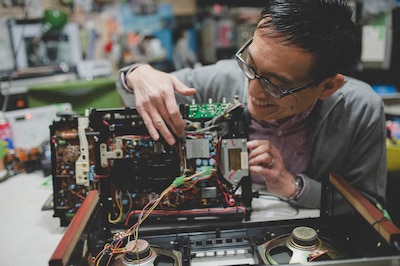
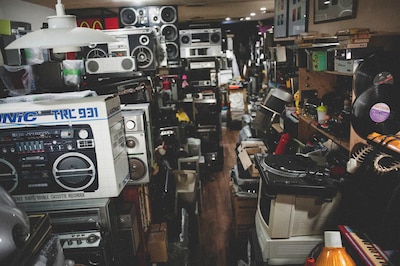
I collect electrical appliances, mainly cassette recorders. I first noticed them when I was in my teens in the 1980s. I love those from the 1970s and 1980s especially, because at that time things were made without restriction. Designers could make what they wanted to.
I started actually collecting about ten years ago. I was an interior designer before. I knew that a lot of attractive electrical appliances were thrown away and I felt I needed to stop that somehow. I left the company and I started collecting seriously.
I often go to some waste disposal sites in Saitama and I look for the ones I like. Then I come back to my studio, check the ones I got, list them and I fix them. Now I have about 3000 radio cassette tape recorders. I fix all the recorders because I want to hear the sound. Every recorder’s sound is different. I admire the design, and then I fix the recorder to admire the sound.
Some take just a day, others can take months. I have some that took years. I’ve studied how to fix things by myself. I make some parts if I can’t find them. If you have passion then you can do it. I taste the recorder fully, and then I move on to the next one. I love to make them alive again. There are still so many unknown recorders to meet. When I hear the sound after fixing the recorder... then all my hardship disappears.
Ryota Hayshida
Collection: Analog Synths
Total Size of Collection: 14
Location: Tokyo
Rarest Item: “There are only 700 PPG WAVE2.3 in the world. I am a very lucky man.”
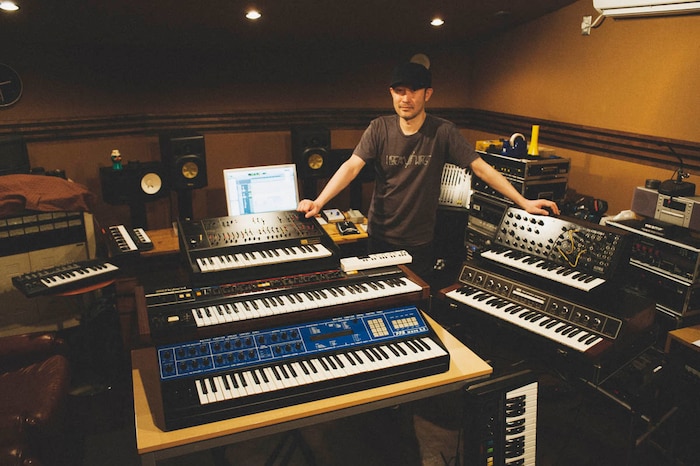
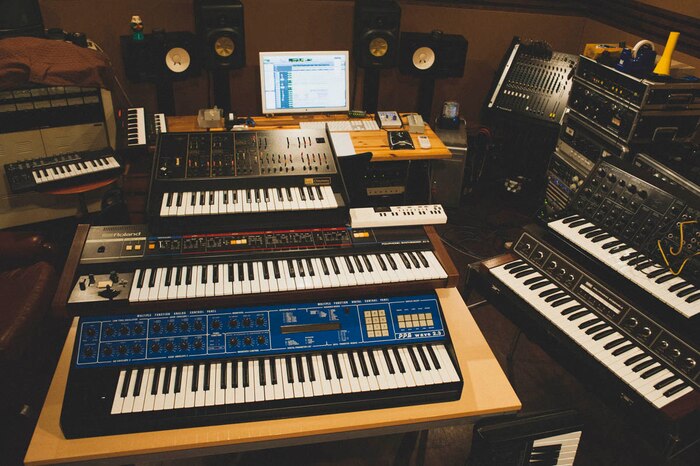

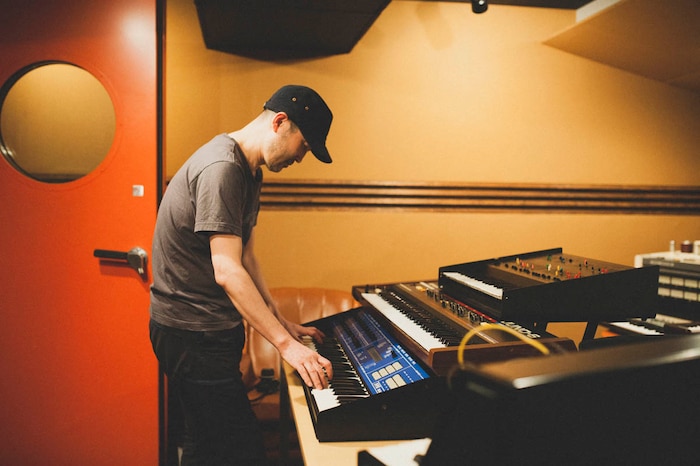
I have eight synths. I used to have more but I let five or six go. There are two types of synthesizer collectors. One who loves synthesizers as they are, and one who loves the sound that comes from the synthesizers. And I am the latter one. If I don’t get excited about the sound, I’m not interested.
When I was around ten years old I was listening to Japanese folk music like Masashi Sada. But it all changed in 1979 when I was 12 years old. A friend came to my house with a cassette and told me to listen to it. I was drawn to the sound that I had never listened to before. It was “Man Machine” by Kraftwerk.
I started to get interested in synthesizers and when I was a first-year high school student I got a KORG Mono/Poly. It was about ¥150,000. It was my first analog synthesizer but I could use it perfectly because I was always reading manuals or catalogs of synthesizes and imagining playing them in my head. It was perfect.
Synthesizers were still not well known to my generation around that time, but two of my friends and I made a band. We covered Depeche Mode. I was listening to them a lot and Thomas Dolby and Tangerine Dream. In Japan, bands like YMO and Hikashu were making this style of music using synthesizers as well.
I’ve been working with sounds ever since. I am a recording engineer. The existence of the synthesizer itself has changed my life.
Takeshi Nakatsuka
Collection: Electronic Games
Overall Size of Collection: Over 120
Location: Tokyo
Oldest Item: “‘Simon Game’ from about 1978.”
Rarest Item: “‘Slimboy Watchman Bowling’ by Tomy. ‘Normal Watchman’ series are wristwatches but this one is a clock. These didn’t sell well so they’re very hard to find. They are hard to find as they used to be sold at a watch store not at a toy shop. I still don’t have all of them. If I find this one then I always buy.”
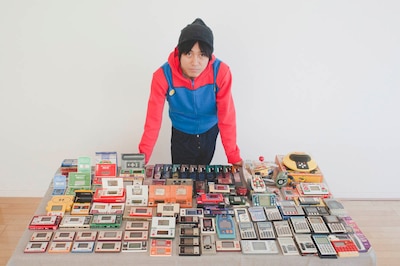
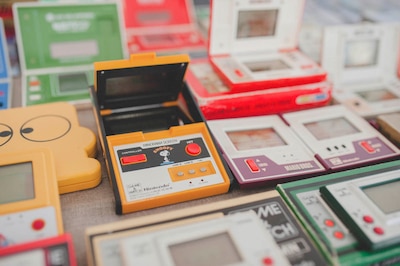

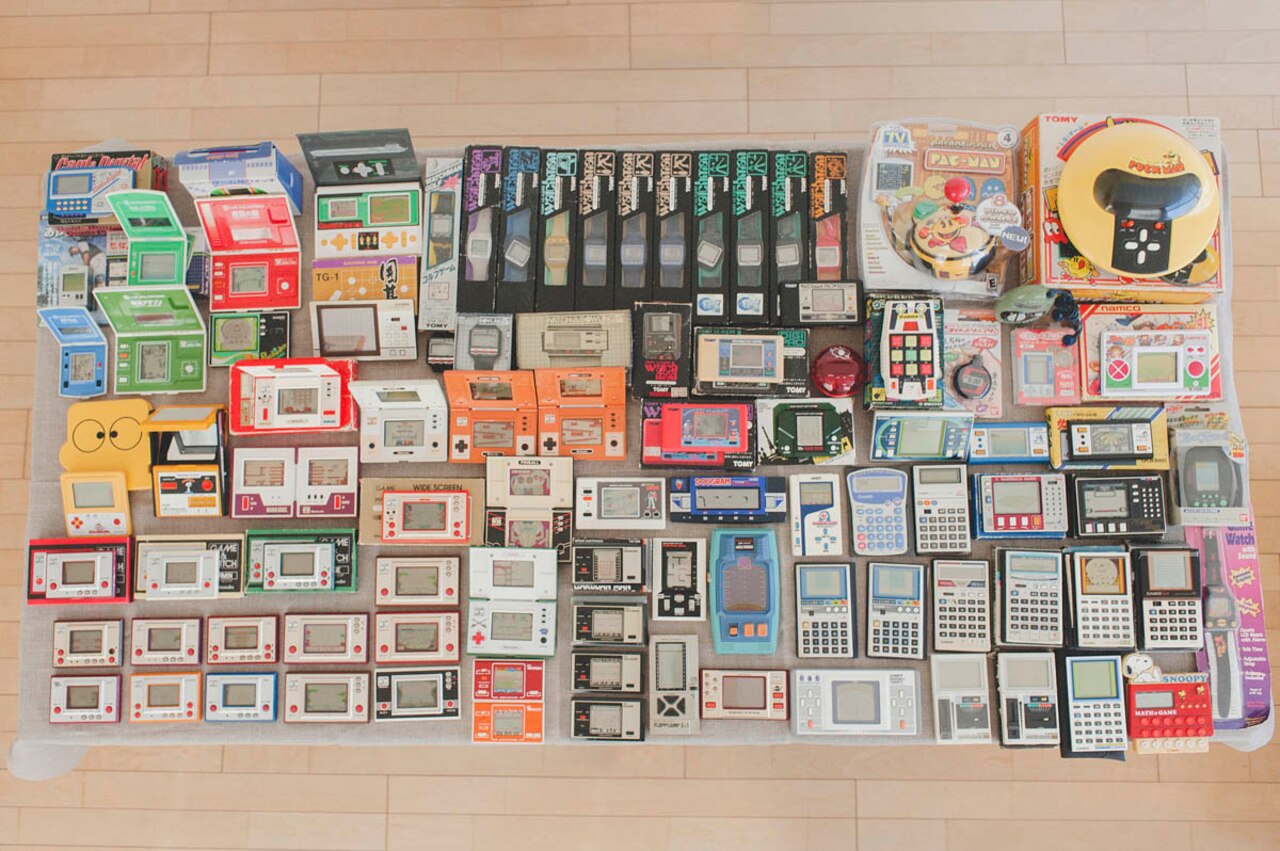
In 1980 I was five years-old and game watches were a hit. Everyone liked games. At that time I only had one or two of course, but then when I was in high school the Game Watch boom was gone. Everyone was playing Family Computer or Game Boy. And it was a big chance for me as the prices of the old electronic games including Game Watch went down.
I started buying loads. Now they are valued more than ¥10,000 where they used to be about ¥5,000. My collection has about 120, so I may have spent about ¥1,000,000.
There are some strange ones. With the Panorama Screen Series Game Watch they made full color display possible by taking the natural light and reflecting it to the mirror. They tried hard!
What you need in games is just rules and great ideas. Look at Tetris; it’s just some blocks. The pictures are not impressive but the rules are simple and the ideas are great. So it’s not only about electronic games, it’s a treasure land of great ideas. Nowadays, the pictures are so beautiful and really high-tech, but they tend to add too much and the point is lost.
I collect them because I can complete the collection. If they were unlimited, then I wouldn’t be attracted. For example, I know I can get all the game applications for iPhone whenever I want, so I don’t feel like collecting them. Things that are made with limited numbers mean they might be gone from this world, so I want to keep a hold of them.
Toru Suyama
Collection: Bass Guitars
Overall Size of Collection: 300
Location: Yokohama
Hardest Item: “‘Fodera’ basses are the hardest to collect, normally they make wood patterned ones but one coloured bass took me ten years to find.”
Rarest Item: “I don’t really think about which is the most rare. I don’t care what it’s worth in the world, I just get what I like.”
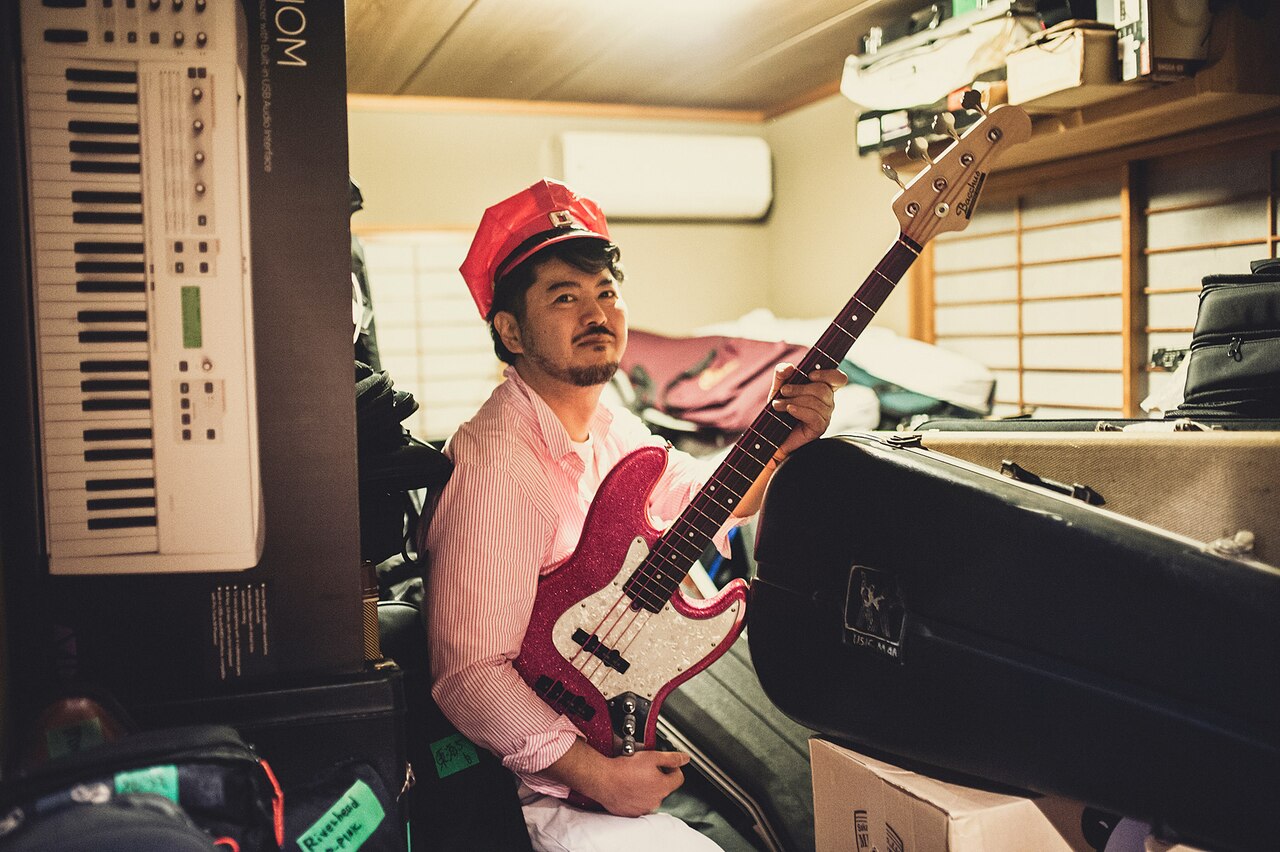
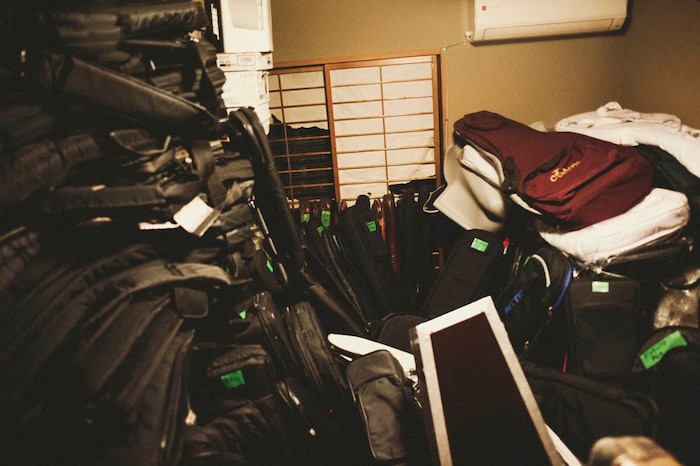

I’m not a collector. I just have many bass guitars that range from a few thousand yen to a million yen. There is one that took me ten years to get. But they are all important to me equally.
I am a musician and a psychiatrist. I play the bass and sing in my band Fancura Daijin and am also a member of a cover band. I started playing the bass when I was 11 years old in 1980. I saw Hikashu play on TV and Koichi Makigami was singing with the bass guitar at the time. I thought that was really cool.
I need to have many things if I like them. I get anxious if I only have one. It’s not only bass guitars that I have many of. For example: I have 15 MacBooks. I used to have nine cars, but now just three. I know it’s embarrassing; I sweat.
A few years ago I remarried, and where I used to have 300 basses, now I have about 100. Before that I was leading a dissolute life alone and buying lots of bass guitars; almost like self-injurious behavior. When I sold them I almost cried as I felt sad. But I was spending lots of money, I have no idea how much, but maybe more than ¥10,000,000!
Why do humans collect? Well, when you get one and it’s in your hands you forget that you have that one, you forget about all the process to get it, so you look for the next. I like bass guitars because they are the most emotional instrument for me. I can express my feelings easily. They are very intuitive.
Yuichiro Hosokawa
Collection: Guitar Pedals
Overall Size of Collection: 250 pedals
Location: Tokyo
Favourite Item: “‘Big Muff’ from 1974. They all sound different. I have had eight of them. But one sounds particularly amazing.”
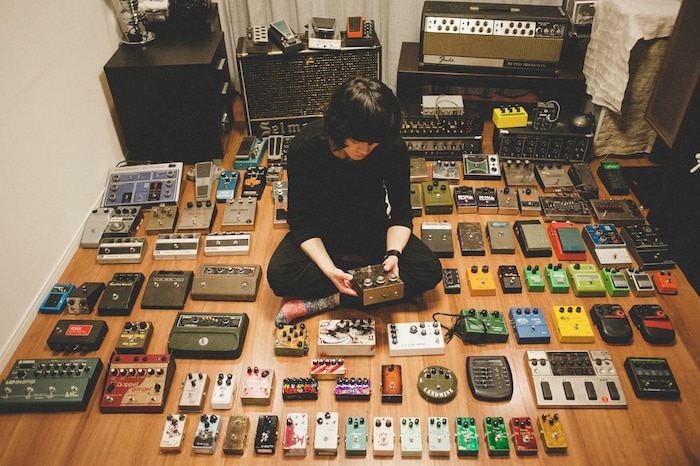
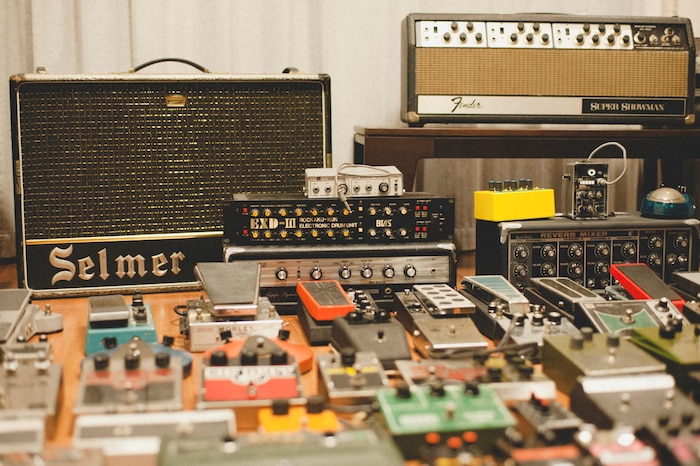
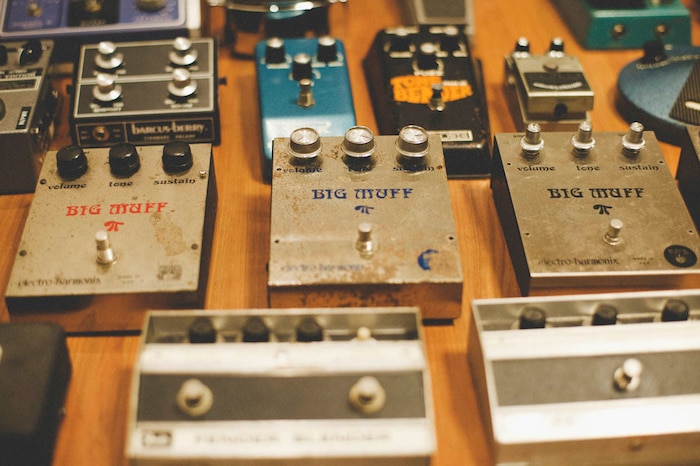
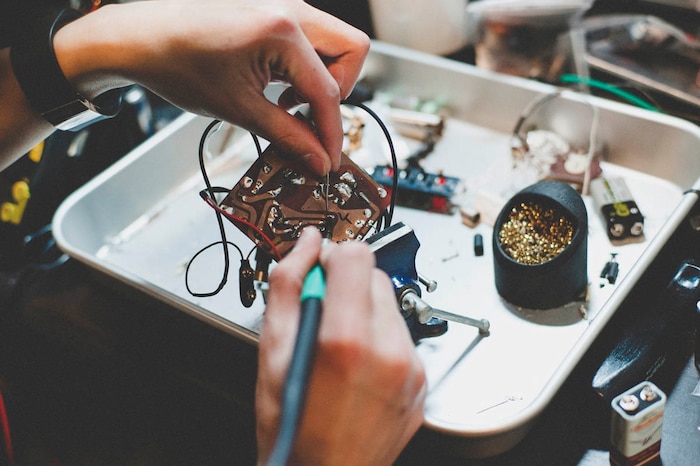
I play some instruments, but that’s not my profession. I work at a music store, meaning I have touched and listened to about 2,000 pedals. I have an opportunity to talk with people who work for audio electronic company. We discuss pedals and a few were really designed after these discussions.
There is a great book called The Encyclopedia of World’s Pedal Effectors; I can’t tell you how much I enjoyed looking at all these pedals in this book when I was in high school. I like the appearance; the way knobs are arranged, the color, I mean everything in total! I also like to open the pedals and look at the insides.
I’ve bought 200-250 in total, but I sold some of them and now I own about 100-150 pedals. The most expensive one was about ¥200,000! I think I’ve spent about ¥7,500,000 yen. Sometimes I think: “What am I doing!?” [laughs] but I wouldn’t be interviewed without my collection.
I think things in general change with the times. So my pedals show the times when they were made. Pedal effectors were made in 1962 for the first time, the pedals from the 1960s are really big and crazy. I like the differences.
I know there are collectors in the world, but how Japanese collectors collect things is extraordinary. I feel that about me too. I think there are more Japanese who like to see the small differences in things. It’s so fun to look for a certain thing and when you find that it’s a big pleasure. The excitement is addictive.
All images: Suguru Saito
Header image © Suguru Saito

